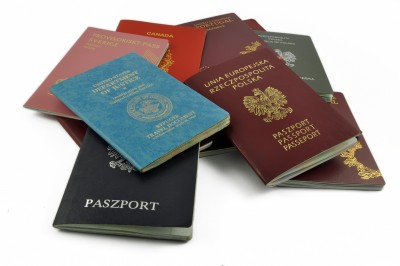
While the production of identification documents is a global business, estimated to be worth hundreds of millions of dollars a year in revenues for designers, producers and manufacturers, the cost of fraudulent passports, driver’s licences and pass cards adds up to hundreds of billion dollars a year in lost revenues, untold damage to corporate reputations, and funding initiatives to combat the counterfeiters.
Identity theft affected 17 million people and amounted $15bn in 2014 in the US alone in 2014 while the Department for Homeland Security reported in 2016 that it believed Europe’s trade in forged and stolen passports was so out of control that it had reached ‘epidemic’ proportions. Elsewhere, police personnel in India are being issued with smart identity cards with special security features and a hologram in a move to improve security and identify fake officers.
But in the war on counterfeiting, holography remains a weapon of choice, paramount in securing data and protecting identity documents against interference, tampering, alteration, forgery or imitation. New materials, scientific innovation and state-of-the-art manufacturing practices combine to keep the technology fresh, secure and relevant, continuing to play a seminal role in protecting against the photograph and personal data forgery, otherwise known as the ‘variable information’.
However, the ability of holography to provide effective protection lies in the continuous innovation of new techniques. Both optical effects and material science techniques have created authentication devices that are easily recognised yet difficult to copy accurately. They can be safely integrated within the production process and stand-up to the rigorous demands of being in use for a period of anything up to ten years.
Modern reprographic technologies make it possible to copy many things but the real issue is just how accurately can holograms be copied? The answer is that their intrinsic features ensure that the techniques and visual effects make it extremely difficult, perhaps almost impossible, to copy a well-designed security hologram 100 per cent.
Holograms serve as both a means of protection and authentication, and a warning about the dangers of counterfeiting. Therefore, they are not solely to prevent counterfeits but act as an effective detection device, making it easier for the trained eye to distinguish the genuine article from the fake or usurper.
Manufacturers are responding to the technical challenges this imposes through new optics and material science technologies used in the production of holography solutions for ID. Since 2010, we have seen significant growth in the number of passport and other documents issued that feature OVD (optically variable devices), which are created in highly-secure facilities and are at the forefront of overt asset and brand protection programmes - the OVD can be used as a stand-alone feature or combined with printed security features to create devices that are extremely difficult to replicate using conventional photocopy or scanning technologies.
New developments
Companies currently at the forefront of new developments include OVD Kinegram, one of the leading providers of security technologies used in the protection of government documents and banknotes. The company’s Kinegram digital seal is a copy-resistant feature that interlinks and interlocks physical ID documents with mobile verification processes. It takes the biographical data from an identity document and encodes this information into a quick response (QR) code, which can be encrypted and read by a smartphone. The code is protected against forgery or interference by the optical structure and the information contained therein can be read using a simple smartphone app to verify and check that the document is not stolen, lost or fake.
Growing smartphone usage in the authentication processes is also behind the development of high security opto-digital foil technology. Optokey OVDs from Surys combine a digital data matrix code with a high definition micro image, which is part of the holographic security design. Using a dedicated app, specific images and properties can be authenticated without the need for an internet connection.
Russia’s RPC Krypten is another firm at the forefront of developments in the sector with its photopolymer laminate 3D Gram-M; an overlay technology that has a bright reflectance at discreet angles and undergoes a colour change from green to gold and then finally red when viewed at acute angles.
Passport pages need to be adequately protected from tampering and alteration but it can be difficult to achieve this when there’s such a proliferation of different formats and styles in use by different national governments. However, new printed security laminates can be deployed across multiple formats to provide effective protection of document types and specifications. For example, ITW Security Division’s Holoprotek security laminates utilise proprietary technology to protect against the forgery and counterfeiting of government and personal ID document data pages, combining traditional holographic effects with high security print to provide level one security features for public recognition and simple, easy to verify level two security features.
Elsewhere, manufacturers continue to push the boundaries in addressing anti-counterfeiting solutions aimed at end-users.
Promoted as a significant step forward in moving further than the current state-of-the-art in light transmission, optically variable coloured effects are visible through Surys’ Plasmogram: a new generation, high security DOVID that combines reflective and see-through effects on a nano-structured film incorporating physical properties. It’s one of a number of ‘break through’ technologies that are now increasingly finding their way into the high security sector where, for instance, they are being adopted by producers of passports to provide beneficial features including added track and trace capabilities.
Equally, for ID cards, we are seeing optical security features coming through that can be integrated with almost any substrates - plastic cards, polycarbonate material, composite and paper - to deliver ‘smart’ ID solutions - ones that combine optical and digital technologies to offer both visual and automatic authentication based around the interactions of the user and smart devices.
Holograms will continue to play an important part in moving ID documents to the next stage of development as those with responsibilities for safety and security look to stay one step ahead of the criminals; ensuring quality and checking the trade in fake ID while those documents not displaying security holograms are seized and destroyed.
Those involved in law enforcement, border protection and ID security will always be reassured by the presence of holography technologies and devices on passports and other documents, clearly seeing and benefiting from the advantages they provide. Moreover, the use of well-designed and properly deployed authentication solutions, enables those with safety and security responsibilities to verify the authenticity of a legitimate product, differentiating it from counterfeits. Even those that carry a ‘fake’ authentication feature can be distinguished from the genuine item if that item carries a carefully thought-out authentication solution.

Dr Mark Deakes is general secretary of the International Hologram Manufacturers Association (IHMA), which is made up of 100 of the world's leading hologram companies. Members include the leading producers and converters of holograms for banknote security, anti-counterfeiting, brand protection, packaging, graphics and other commercial applications around the world, and actively cooperate to maintain the highest professional, security and quality standards.
©
SecuringIndustry.com
 | back to top
| back to top







